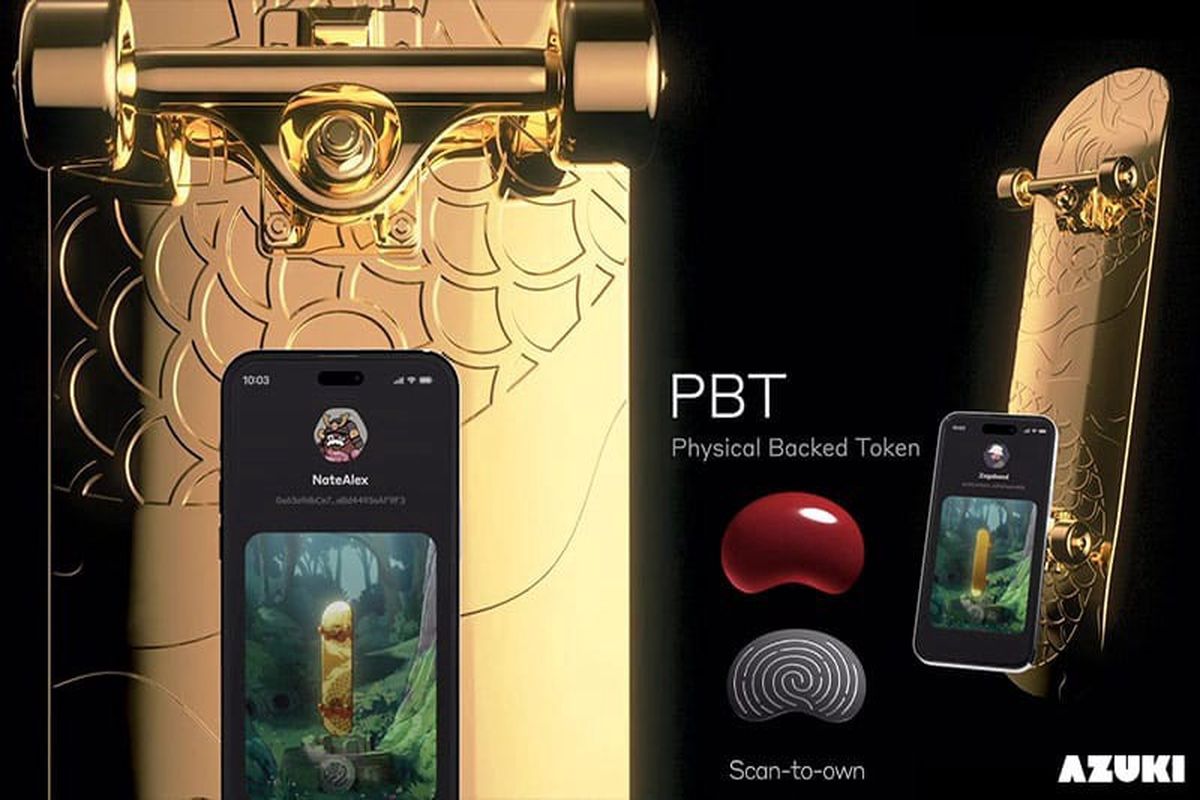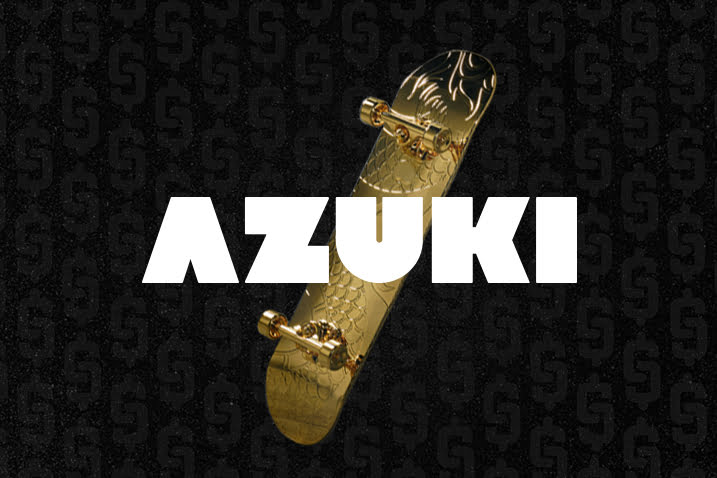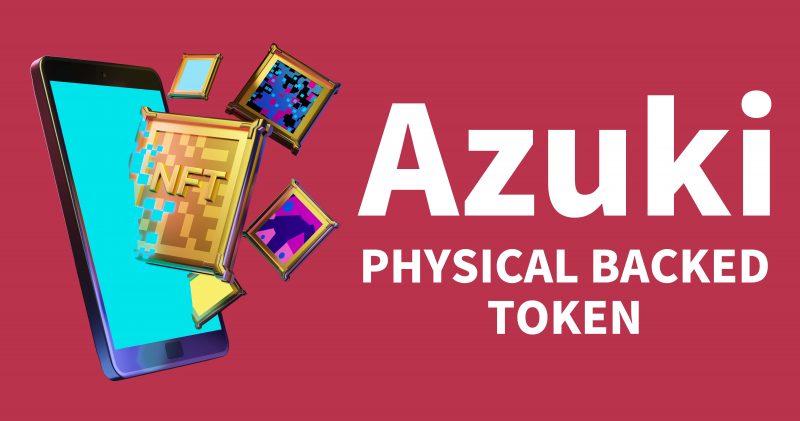By description, Physical Backed Tokens (PBTs) are open-source token standards built on the Ethereum blockchain. They help link a physical item to a digital token. Therefore, they were given the name Physical Backed Tokens. Chiru Labs developed these Physical Backed Tokens inspired by nonfungible tokens.
Physical Backed Tokens (PBTs) come with several use cases that make them a viable and worthwhile technology. These tokens are designed with various features that will help solve the common challenges that come up due to fake and fictitious ownership documents in the physical world.
Over the last several years, blockchain technology has proven to be full of unlimited exploration. Early exploration in this space consisted of blockchain innovations like nonfungible tokens (NFTs), crypto, decentralized finance (DeFi), and many others.
These innovations have continuously evolved to offer users a better experience when interacting with them. Initially, nobody thought this digital sector would someday interact directly with physical items. Notably, the European Union recently planned to utilize the blockchain to manage the supply chain and execute several data storage tasks. Besides this international body, other major nations plan to utilize the blockchain in various business industries.
The experimental use of nascent blockchain technology has brought a new dimension to this industry. This innovation appears to be a chip off the block of nonfungible tokens. Nevertheless, it has a distinct feature that readily unlocks authenticity and rightful ownership of property.
In that context, the newly introduced Physical Backed Tokens (PBTs) will resolve the common problem that is caused by fake ownership documents in the physical world. What are PBTs? Are they different from NFTs?
Related: How to Buy and Sell Gold-Backed Cryptocurrency
Physical Backed Tokens Overview
Physical Backed Tokens (PBTs) are open-source token standards built on the Ethereum blockchain. They help link a physical item to a digital token. Therefore, they were given the name Physical Backed Tokens. Chiru Labs developed these Physical Backed Tokens inspired by nonfungible tokens.
Unlike the NFT physical items like artwork that are fully represented on the chain, Physical Backed Tokens attach physical items into a digital token through a physical chip. PBT represent a relatively new perspective for brands and creatures to record their experiences on the blockchain. Furthermore, its use supports more effortless validation and tracking of an asset’s entire lifespan.
Notably, the digital tokens do not need any centralized servers. There is also no need for a trusted entity to validate an asset’s authenticity once PBT gets involved. It can operate independently on-chain. Before its creation, most institutions have tried and even developed some products similar to PBT. Nonetheless, it is described as the first innovation to offer trustless authentication.
The Physical Backed Tokens design lets anybody create, validate, and authenticate experiences since it is open-source and available freely.
Working With Physical Backed Tokens
To better understand the operational mechanism of the Physical Backed Tokens, we have to keenly examine the issues that they help resolve. A quick overview of the previously developed models indicates that the representation of physical items using digital tokens resulted in many issues.
These challenges arise from the separation of the digital asset and token after minting. Notably, the previous model resulted in two major issues. First, these nonfungible tokens could not work as a direct substitute for the physical asset.
Secondly, users confirmed that there was a need for separate digital tokens and physical assets authentication. NFT attached to a physical item might be swapped on a public marketplace without the involvement of the physical asset.
Related: What Are Fractional NFTs And How Do They Impact Real-World Investments?
Seeing these challenges from other models, PBTs differ significantly in using on-chain tracking of NFT ownership and decentralized validation for a given physical asset. It makes it difficult and impossible for the token to get separated from the physical asset. It readily achieves all that through the BEAN chip, normally embedded in the physical asset.
BEAN chip is simply a cryptographic chip that stands for Blockchain-Enabled Authentication Network. Items can be exchanged using the scan-to-own feature available on this blockchain, and the people who buy a physical asset gain PBTs by scanning the BEAN chip. In that context, new owners can mint and transfer PBTs to their chosen wallets, granting them rightful ownership.
Each physical chip needs to have the capacity to generate and store asymmetrical key pairs, expose the public key, sign messages using the private key, and keep the private key confidential. No NFT can be minted successfully without getting linked to a particular chip. Physical Backed Token utilizes a special function known as “TransferTokenWithChip”. This function guarantees the integration of the physical item involved and the digital token.
Advantages Of Physical Backed Tokens
Some of the benefits that come with Physical Backed Tokens (PBTs) have been highlighted in previous sections. Nonetheless, many other advantages are yet to be discovered. As previously highlighted, PBTs will assist in the validation of physical assets on the digital platform, reducing challenges posed by counterfeiting.
It also offers a platform where the ownership details of assets can be publicly displayed, sidelining all types of third-party companies and individuals. Physical Backed Tokens will enable blockchain startups specialized in supply chain management to track and validate good ownership. Top blockchain startups in the supply chain sector include Everledger, Openport, Blockverify, Origintrail, Provenance, and many others.
Related: Six blockchain startups selected for innovation program
Azuki PBT
Azuki is the first blockchain studio to develop Physical Backed Tokens (PBTs). They were created as a trustless and decentralized concept. The studio’s aim was to generate a digital experience from physical items. To achieve that, Azuki unveiled a limited edition of nine golden skateboards on October 21, 2022.
The 24-carat gold skateboards represented some valuable physical items linked to a Physical Backed Token. At that launch, the team auctioned eight skateboards for a staggering $2.5 million, which set a record for the most expensive skateboard in history. The Physical Backed Tokens let users create digital tokens and physical items, exchange validated goods, and participate in a variety of quests.
Notably, the Azuki project is an NFT project that has 10,000 special anime-styled samurai and skateboard characters. This project is owned by four artists going by their official name Chiru Labs. After introducing PBTs, the price of the Azuki NFTs increased massively, making it the number one most traded NFT on the OpenSea marketplace.
Sadly, the announcement of previous project failures by Zagabond, the team leader of Chiru Labs, resulted in an abrupt drop in price.
Azuki PBT Operation
The Azuki Physical Backed Token is a groundbreaking innovation for the entire Azuki project. Users can understand what the Azuki PBT is by reflecting on its operation. Notably, the best way to understand the operation of Azuki physically backed tokens is to focus on the issues that it strives to resolve.
The past models of representing physical assets via digital tokens on blockchains separated this token and the Asset after minting. Thus, the representation of digital ownership for physical assets encountered two considerable challenges:
- Nonfungible tokens could not work as the proxy for the physical assets they represent. The current NFT scenario differentiates NFTs and real-world items as unique elements. Based on the current model, the NFT for a physical item is dependent on trading on digital marketplaces.
- Another major issue in the current model for representing physical assets as nonfungible tokens is the need for validation. Physical items require validation from trusted authorities to underpin their authenticity.
Related: How to Profit From NFTs
Azuki PBT helped resolve these issues via on-chain tracking of NFT ownership and decentralized authentication for the involved physical assets. Interestingly, the physical assets in the physically backed token model comprise a ‘BEAN’ chip which assists in the extensive authentication of NFT ownership.
Concurrently, the PBT standard itself would help in the decentralized tracking of ownership. In case the owners of a physical item desire to sell the item, the buyer can follow the ‘scan-to-own’ process. Buyers can also gain PBTs by directly scanning the linked physical asset.
The Bean Chip supports the ‘scan-to-own’ experience and is an important component in the operation of the physically backed tokens. The Blockchain-Enabled Authentication Network chip creates an asymmetric key pair independently.
Physical-backed token owners are allowed to mint or transfer PBTs to various wallets by scanning the chip embedded in the item. The Physically Backed Azuki token would be directly integrated with the physical item via authentication. The token would get stored in the preferred crypto wallet of the owner, thus granting ownership of physical backed tokens to the real owners of the physical items.
The Takeaway
Introducing the Physical Backed Tokens will relatively ease the validation of physical goods. With these tokens, companies can easily track and authenticate the supply chain of products and original ownership, eliminating the need for paper.
The discovery is just one of the many forthcoming developments in the blockchain sector. Notably, anybody can use the innovative PBTs model without any permission from the original developers.
If the Physical Backed Tokens become widely improved and accepted, it will give rise to more utility. PBT now involves many physical collectibles like bags, toys, watches, books, and trading cards. Future utilities might include physical items like buildings, consumable goods, real estate, and a lot more. The exploration of PBT is that the nascent stage, and there are many more that are yet to be introduced.







